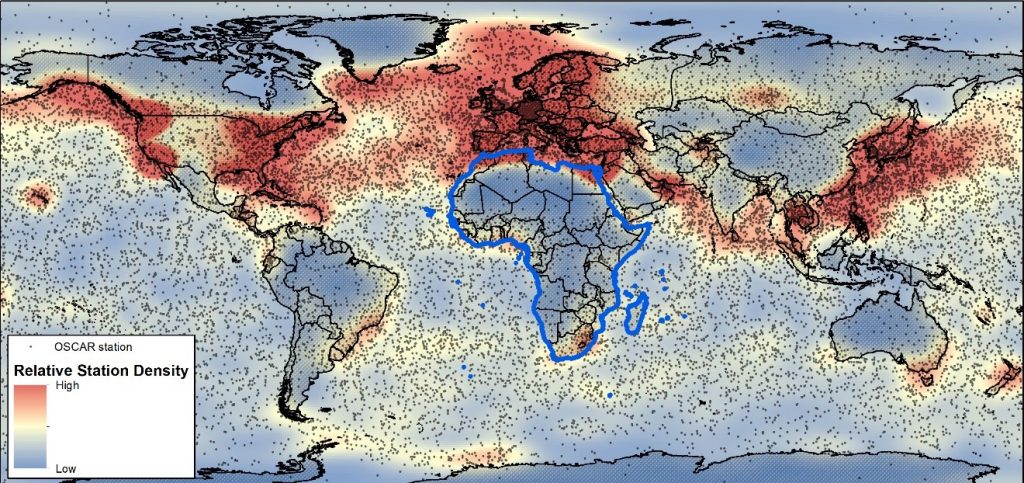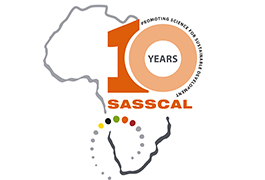A new study titled “Towards a feasible and representative pan-African research infrastructure network for GHG observations” was published on 14th August 2018 in Environmental Research Letters. SASSCAL crucially contributed to this publication in line with its work on the SEACRIFOG project.

Worldwide distribution of weather or climate observation stations listed in the Observing Systems Capability Analysis and Review tool (OSCAR) of the World Meteorological Organization (WMO) as in April 2018. Source: Ana López-Ballesteros et al. (2018), Environ. Res. Lett., 13, 085003.
The paper highlights the need for a systematic and long-term continental network of research infrastructures to observe greenhouse gas emissions across Africa and the surrounding oceans. In global comparison, climate-relevant observations across the African are very sparse, resulting in a high uncertainty about the continent’s global greenhouse gas budget. An observation network tailored to African circumstances will not only allow for more accurate attribution and quantification of emissions, but also the development of viable climate change adaptation and mitigation strategies. This is particularly important in the African context, where a relatively large portion of continental greenhouse gas emissions is linked to land use, agricultural production and, eventually, food security.
The publication further presents the preliminary results of the work carried out by SASSCAL and its implementing partners towards the design of such an observation network. This comprises a first iteration of a set of ‘essential’ climatic and environmental variables to be observed systematically by this network. SASSCAL lead the identification process of these variables covering the atmospheric, terrestrial and oceanic domain. SASSCAL further compiled an inventory of existing and planned observation infrastructures across the African continent and conducted a spatial analysis of the corresponding observational coverage of the various African biomes and ecosystems. This allows for the identification of observational gaps and forms the point of departure for the optimal design of the future network.




